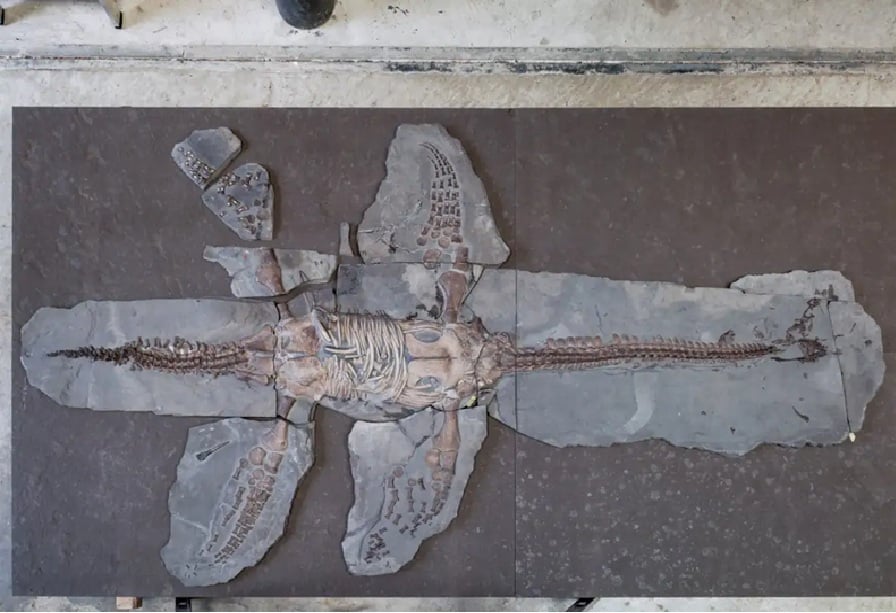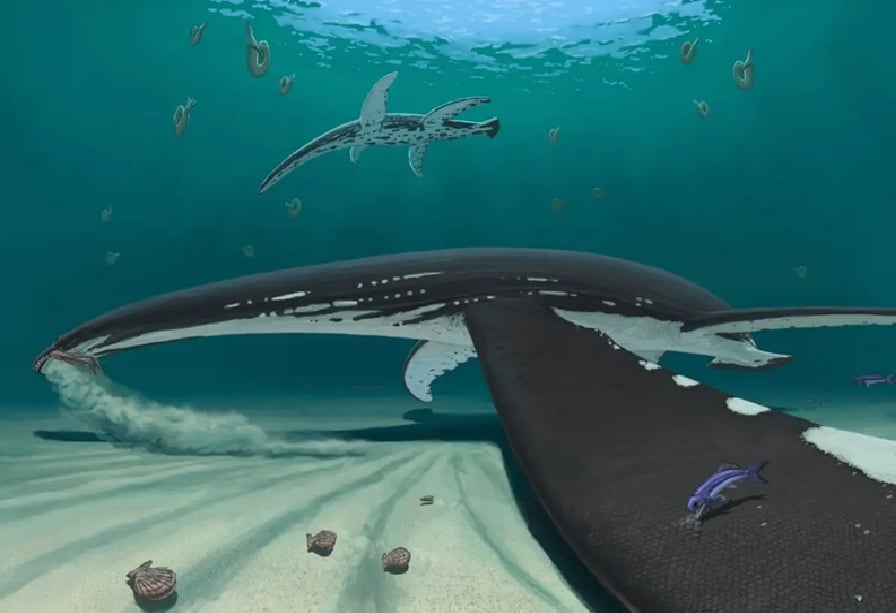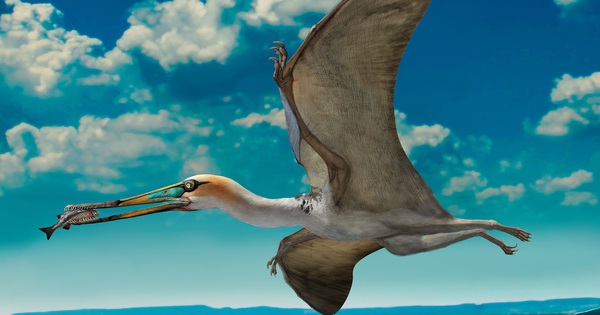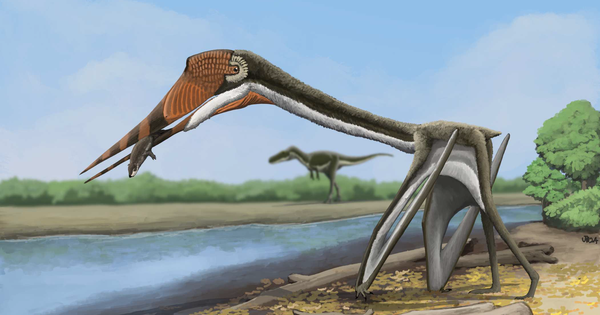(NLDO) - Scientists have recreated a "hybrid" monster between a dinosaur, a snake, a turtle... from a 4.5 m long fossil skeleton found in Germany.
According to New Scientist, the research led by paleontologist Miguel Marx from Lund University (Sweden) marks the first time the soft tissue of a plesiosaur - a sea monster from the dinosaur era - has been analyzed in detail.

Plesiosaur sea monster found in southern Germany - Photo: CURRENT BIOLOGY
The extraordinary specimen was found from a famous fossil deposit in southern Germany, where the early Jurassic Posidonia shale has preserved many ancient creatures.
The monster was preserved with a 4.5 meter long intact skeleton and some soft tissue, which is considered a treasure for paleontology.
Preliminary analysis shows that it lived about 183 million years ago, during the Jurassic period.
Plesiosaur in Greek means "like a lizard". They are also known by the Vietnamese name "snake-necked lizard".
This monster is characterized by a dinosaur-like body but a disproportionately long neck, swimming with large fins quite similar to those of a sea turtle.
The study, published in the journal Current Biology, also describes other interesting features: Their bodies are quite wide and flat, with four long fins that work in a way that propels the body like "flying in the water".
In addition, soft tissues also show that their skin is smooth on the tail, but the fins are scaly like turtle fins.

The monster's appearance was recreated by the research team - Graphic photo: Joschua Knüppe
“This gives us unparalleled insights into the appearance and biology of this long-extinct reptile,” said Dr Marx.
The unusual combination of smooth and scaly skin on various parts of the monster's body is believed to be related to different functions.
Plesiosaurs needed to swim efficiently to catch fish and squid-like animals, a task made easier by their smooth skin and the way they "flew through the water."
However, they also need to move across rough sea floors, and scaly fins can help them do this.
“Our findings help us create more accurate reconstructions of plesiosaurs, something that has been extremely difficult since they were first studied more than 200 years ago,” Dr Marx told Sci-News .
Source: https://nld.com.vn/tai-tao-quai-vat-bay-trong-nuoc-183-trieu-nam-truoc-196250209091033034.htm



![[Photo] President Luong Cuong meets with Lao Prime Minister Sonexay Siphandone](https://vstatic.vietnam.vn/vietnam/resource/IMAGE/2025/4/25/3d70fe28a71c4031b03cd141cb1ed3b1)
























![[Photo] Ho Chi Minh City welcomes a sudden increase in tourists](https://vstatic.vietnam.vn/vietnam/resource/IMAGE/2025/4/25/dd8c289579e64fccb12c1a50b1f59971)
![[Photo] Liberation of Truong Sa archipelago - A strategic feat in liberating the South and unifying the country](https://vstatic.vietnam.vn/vietnam/resource/IMAGE/2025/4/25/d5d3f0607a6a4156807161f0f7f92362)



































































Comment (0)